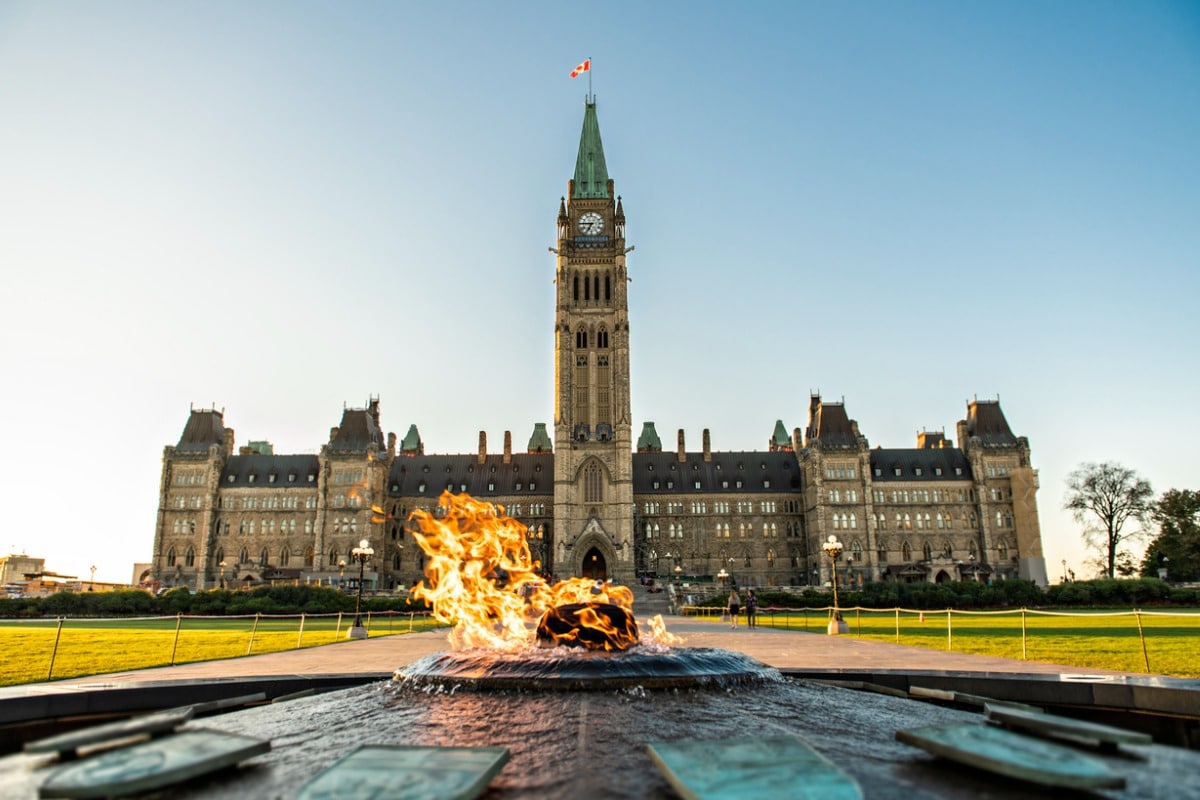At least 170 seats out of the Canadian Parliament’s 338 seats are needed for a majority. A majority government enables the ruling party to implement any legislative changes that they wish without needing the support of opposition parties. In minority governments, the ruling party must work with the opposition in order to pass laws and maintain power.
The Liberal Party of Canada won a majority in the 2015 election but was relegated to a minority government following the 2019 election. Last month, Trudeau forced an election two years before his government’s four year term was set to expire as he sought to achieve another majority.
In the 2019 election, the Liberals won with 157 seats and 33.1 per cent of the popular vote, whereas the Conservatives won the popular vote at 34.3 per cent, but only secured 121 seats. Forecasts suggest the Liberals will win a similar number of seats in this election.
The Conservatives will finish second, as expected, with the Bloc Quebecois and New Democratic Party (NDP) rounding out the top four parties.
The Liberals and Conservatives traded spots in national polling throughout the campaign in what was a very close race. They are the only two parties to ever govern Canada since the country was founded in 1867.
Throughout the campaign, immigration took a back seat to issues such as climate change, affordable housing, and economic recovery. However, both the Liberals and Conservatives promised to increase immigration, address the backlog in applications, and improve credential recognition.
What does the election result mean for Canadian immigration?
The election outcome should result in few major policy changes and surprises to Canadian immigration over the coming years. Another Liberal minority should also have little direct impact on the immigration system. Since 2019, the Liberals have been able to enact their immigration agenda without much controversy or opposition. Instead, the opposition parties have focused on holding the government to account on other issues such as its response to the pandemic, economic and fiscal policies, and foreign affairs issues such as Canada’s response to the crisis in Afghanistan.
As such, we should expect a continuation of the Liberal’s immigration agenda that has been implemented since 2015. This means an ongoing commitment to welcoming high levels of immigration to support Canada’s post-pandemic economic recovery, as well as a commitment to reuniting families, helping refugees, and welcoming other global talent such as temporary foreign workers and international students.
For refugees, the Liberals promise they will work with employers across the country to welcome 2,000 skilled refugees to fill labour shortages in in-demand sectors such as health care. Plus, they want to double down on their commitment to Afghan refugees and raise the resettlement goal from 20,000 to 40,000.
The Liberals say they will support temporary foreign workers and Canadian employers by establishing a Trusted Employer stream to that will streamline the application process. They also vow to improve the Global Talent Stream by simplifying permit renewals, upholding the two-week processing standard, and establishing an employer hotline to allow companies to attract and hire workers.
What are the next steps for Canadian immigration?
Developments after the 2015 and 2019 elections provide us with a sense of what we can expect on the Canadian immigration front over the next six months or so.
Within 1-2 months, we should know the members of Trudeau’s new cabinet. It is possible that current Immigration Minister Marco Mendicino will remain in his role. The Prime Minister will assign each minister a mandate letter. The mandate letters will contain the key policy priorities each minister is to pursue. The immigration minister, for example, will receive a mandate letter that will shape the trajectory of Immigration, Refugee and Citizenship Canada’s priorities and these priorities will have a direct impact on the provinces, territories, and entire immigration system.
The next major event to watch is the announcement of the 2022-2024 Immigration Levels Plan. The levels plan guides IRCC’s immigrant admissions targets, the number of immigrants that will be targeted under each admissions class (economic, family, refugee, and humanitarian), and allocations for each province and territory. This announcement should occur in the first quarter of next year, and by March 2022 at the latest. Next year’s announcement should be standard, with the Liberals very likely to remain committed to their plan to increasing immigration beyond 400,000 newcomers each year.
Around that time we should also see the government table Budget 2022. This will outline the Canadian government’s economic and fiscal outlook. The budget announcement sometimes contains new immigration policies, programs, and projects the government aims to pursue. For instance, Budget 2021 stated the government intends to invest almost $430 million to upgrade its IT infrastructure so it can improve the way it processes immigration applications.
Gradually throughout 2022, we should see the new Liberal government begin to settle in and roll out new immigration policies and programs.









Leave a Reply